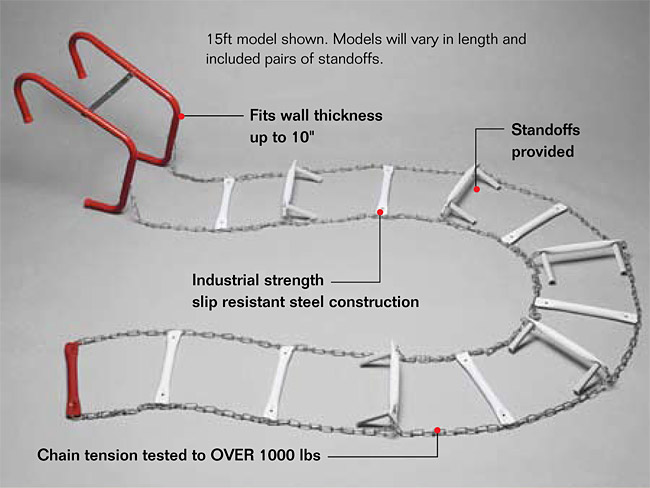
escape ladder courtesy of resqladder
House fires can happen to anyone at any time. Although these fires are not completely preventable, there are some things you can do to reduce the likelihood of a fire originating in your home. Here are 5 tools that will help fire-proof your home:
1. Extension cords with fire-shield. Fire-shield products are designed to help prevent electrical fires. Using innovative technology, these devices are able to reduce fire hazards by preventing surges, overloads and cord fires. Replacing existing surge protectors and extension cords throughout your home with fire-shield products can reduce the chances of a house fire.
2. Fireplace door lock. If there are children in your home, a fireplace door lock is the best way to prevent them from gaining access to the fireplace. These simple devices work by preventing the doors of the fireplace from being opened. This helps minimize the risk of children harming themselves or unintentionally starting a fire.
3. Rapid evacuation device. In the event that there is a fire in your home, a rapid evacuation device like the emergency escape ladder by ResQLadder, can help you and your family escape to safer ground. The ladder hooks onto the window frame and allows users to safely exit a burning home. These devices are well-suited for any room on the second level of your home or higher. They are compact enough to be neatly tucked out of the way in a closet or under a bed.
4. Safety gas shutoff valve. If you have a gas fireplace in your home, having a safety gas shutoff valve is a great way to prevent accidental gas fires from starting in your home. They work by cutting off the supply of gas to the burner anytime both the burner and pilot are in the off position.
5. Carbon monoxide detectors. Carbon monoxide is a lethal substance emitted by a number of gas-operated devices. It has frequently been dubbed “the silent killer” as it has no smell or taste and cannot be detected by the body’s senses. This can include obvious sources like a burning fireplace or a kerosene heater as well as less obvious sources like ovens, gas dryers or a running car. Common symptoms of carbon monoxide poisoning include nausea, dizziness, blurred vision and weakness. Carbon monoxide detectors can help minimize the risk of poisoning by alerting homeowners when this deadly substance is detected in the air.
When it comes to preventing fires in your home, being proactive is your first line of defense. Use these 5 simple tools and you will be well on your way to fireproofing your home.